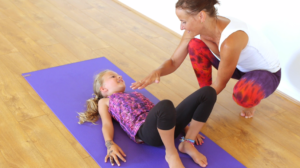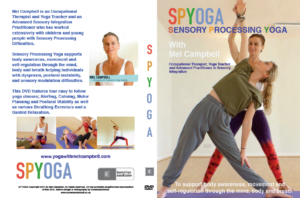Occupational Therapy
My name is Mel Campbell, I am an Occupational Therapist and advanced Sensory Integration practitioner with an MSc in Sensory Integration and a passion for yoga. I have been teaching yoga for nearly two decades and as I immersed myself into the world of sensory integration working as an Occupational Therapist with children and young people with sensory processing difficulties, autism, ADHD and developmental trauma, I felt my worlds colliding and Sensory Processing Yoga evolved.
Yoga and mindfulness is the new buzz word and is becoming increasingly popular as a means of supporting our physical, emotional and mental well-being. This ancient practice originated in India thousands of years ago is fast becoming more mainstream with an increasing popularity across different generations and communities.
For many individuals with autism they may experience difficulties with sensory processing; the world at times may seem confusing, overwhelming and one in which they feel disconnected. They may experience a heightened state of anxiety, feel sensory overloaded in their environment and have difficulties organising their body in space in order to carry out purposeful, skilled and refined motor movements. It is estimated that up to 90% of individuals with autism have sensory processing difficulties (Tomchek, Dunn 2007).
Yoga uses a combination of movement (asana), with breathing (pranayama) and mediation (relaxation) which unities the mind and body. The asana, aspect of a yoga practice moves the body in different planes to support balance, coordination, and integration of both sides of the body known as bilateral integration whilst simultaneously developing strength, flexibility and muscle tone. It is thought that these movements of the body provide a lot of sensory motor input known as sensorimotor which can indirectly help organise the brain to support motor planning, body perception concentration, self-confidence, visual perception and thus learning. By attuning an individual to the sensations outside of their body through the muscles, joints and sensing where the body is in space it helps to reconnect the sense of self so they can become increasing aware of the feelings and sensations inside their body. This is known as interoception and responsible for self- management and regulation. For many individuals with sensory processing difficulties they can have a significant difficulties with their sensory and emotional regulation, the breathing and relaxation exercises in yoga help to calm and focus the mind which has a direct influence on stabilising the nervous system helping to calm the heart rate and reduce symptoms of anxiety often seen in children with patterns of flight, fight, freeze when they are sensory overloaded, anxious or stressed commonly associated with those who experience sensory processing difficulties.
Yoga is fun based non-competitive activity which is extremely versatile. It can be practiced alone using a DVD or in a small group of ideally 4-6. As with any form of exercise the more frequently it is practiced the more beneficial it becomes. My Sensory Processing Yoga DVD is a combination of four 20-minute guided yoga practices specifically designed to support motor planning, regulation and postural stability as well as a range of simple breathing exercises and a mindful relaxation.
I hope you enjoy!
Mel Campbell
Specialist Occupational Therapist
Advanced Sensory Integration Practitioner
MScOT SI, DipCOT, PGDip SI, HCPC, 500 RYT


